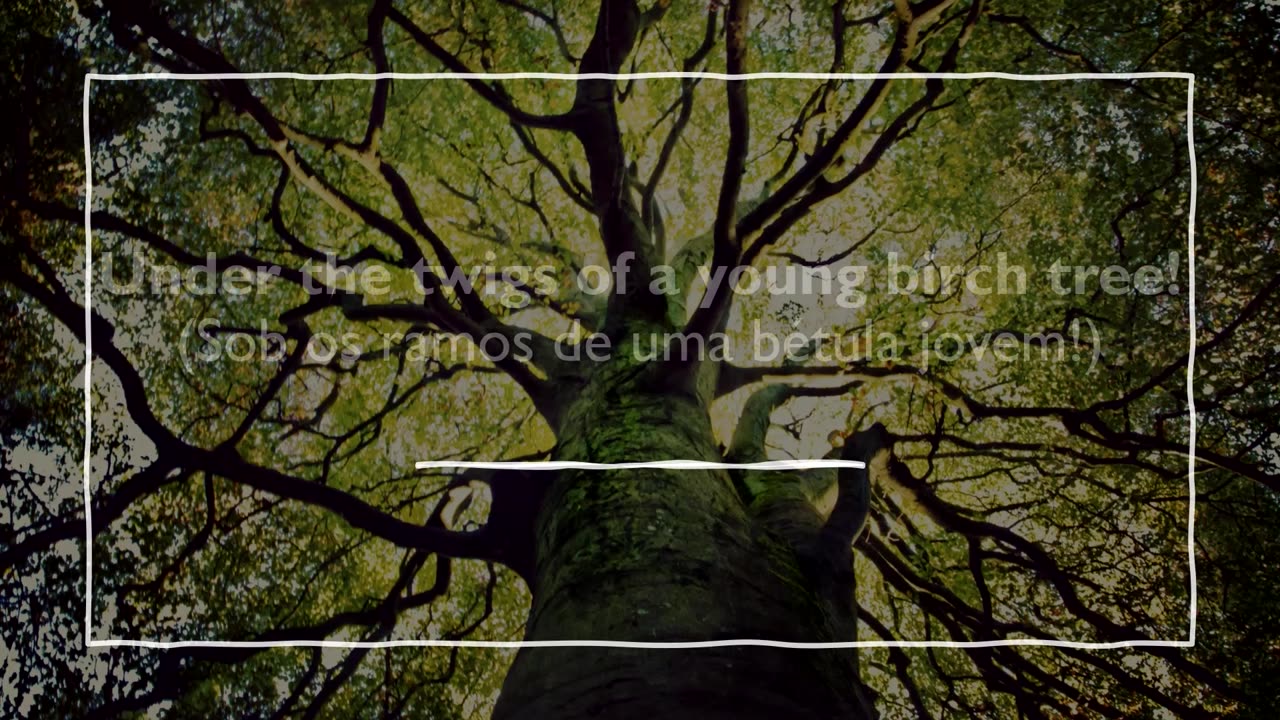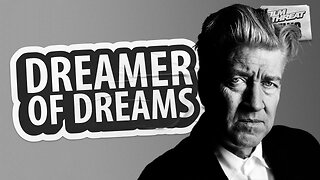Premium Only Content

Recitation of THE KNIGHT'S TOMB by S.T. Coleridge (Ottery St. Mary, 1772-1834, London, England)
About the Author:
Coleridge was born in Ottery St Mary, in the English county of Devonshire, the youngest son of the second marriage of the Protestant pastor John Coleridge. Because he was the favorite of the family, he suffered persecution from his brother Frank. To escape his abuse, Coleridge often hid in the local library, a fact that sparked his passion for literature. Another fact that marked his childhood in Devon was his running away from home at the age of seven, being found the next morning by a neighbor. This night spent away from home was a frequent theme of his poems.
With his father's death in 1781, he went to study, against his will, in religious institutions in London, where he stood out as a voracious reader and, not infrequently, among the best students in his class. However, he felt lonely, as he was rarely allowed to see his family again. In his later poem "Frost at Midnight", Coleridge talks about his loneliness at school.
His brother Luke died in 1790 and his only sister Ann in 1791, which made him write "Monody", one of his first poems, where Samuel compared himself to Thomas Chatterton, an English poet who committed suicide at the age of 17. It is at this time that he starts his problems with alcohol and women. Later he would also have problems with opium, a drug he began to use to relieve pain caused by health problems. In 1791 he entered the University of Cambridge. In 1792 he won a prize for an ode on the slave trade.
In 1793 he enlisted in the army under the false name of Silas Tomkyn Comberbache, supposedly because of problems with debts or with women. By his complete ineptitude for weapons and riding, he escaped being sent to the battlefield in France. After four months, one of his brothers used his influence in the army to get Coleridge discharged for insanity.
At the university, which was never completed, Samuel started to defend revolutionary ideals with his new poet friend Robert Southey. In the same year, they wrote the play “The Fall of Robespierre” and planned to emigrate to Pennsylvania and found a utopian society called Pantisocracy. Robert Southey gives up emigrating and becomes a lawyer.
In the year 1795 Coleridge married Sara Fricker, Southey's sister-in-law, with whom he had four children. Coleridge's marriage was an unhappy one, ending in divorce due to his lifestyle and his unrequited love for another Sara, surnamed Hutchinson. In the same year ST is introduced to William Wordsworth and his sister Dorothy. The friendship was immediate and the three would write many poems together.
The work “Poemas”, published in 1797, is well received and he starts to become famous. Until 1798 he would write his most famous works, with the Symbolist poem Kubla Kahn and the first part of Christabel, in addition to “This Lime-tree Bower My Prison”, “Frost at Midnight” and “The Nightingale”.
It was in 1798 that, together with William Wordsworth, he published the Lyrical Ballads, innovative poems and considered precursors of romanticism. Among the works in this volume, Coleridge's long poem, The Ballad of the Old Mariner, stood out. Note: The band Iron Maiden adapted the poem for a song of the same name, the closing track of the album Powerslave, from 1984.
In September of that year he traveled with the Wordsworth brothers to Germany.
In the high humidity there, his health deteriorated, his addiction to opium increased, and his marital problems intensified. Coleridge wrote his poem "Dejection: An Ode" (Melancholy: An Ode) and intensified his philosophical studies.
In 1804 he went to Malta and wandered around Italy in hopes of being cured by the region's drier climate. He returned in 1806, when he separated from his wife. He no longer enjoyed William's friendship and began to earn his living by writing articles for newspapers and giving lectures.
Unable to get rid of his addiction to opium, from 1810 he moved to the residence of the pharmacist James Gillman, where he finished his prose book “Biographia Literária (1817)”, in addition to other writings such as “Sibylinne Leaves” (1817). ), “Aids to Reflection” (1825) and “Church and State” (1830), in addition to dealing with the republication of some of his works. Around 1830, critical reviews of his work were very favorable and he was considered a good literary critic, although he never achieved financial independence.
Coleridge died unexpectedly peacefully at the age of sixty-one and was buried in Dr. Gillman, in Highgate, on the outskirts of London, leaving behind only a few books and notes. After his death, his nephew Henry Coleridge and wife Sara (Coleridge's daughter) organized the poet's scattered work, publishing several books.
About 100 years after his death it was transferred to the crypt of Saint Michael's Church in Highgate.
(Source: https://pt.wikipedia.org/wiki/Samuel_Taylor_Coleridge)
......................
Sobre o autor:
Coleridge nasceu em Ottery St Mary, no condado inglês de Devonshire, sendo o filho caçula do segundo casamento do pastor protestante John Coleridge. Por ser o preferido da família, sofria perseguições de seu irmão Frank. Para escapar dos abusos dele, Coleridge freqüentemente se escondia na biblioteca local, fato que lhe despertou a paixão pela literatura. Outro fato que marcou sua infância em Devon foi a sua fuga de casa aos sete anos, sendo encontrado na manhã do dia seguinte por um vizinho. Esta noite passada fora de casa servia-lhe como tema frequente de seus poemas.
Com a morte do pai em 1781, foi estudar, contra sua vontade, em instituições religiosas de Londres, onde se destacava como leitor voraz e, não raro, entre os melhores alunos de sua turma. Entretanto, sentia-se só, pois raramente lhe era permitido rever a família. Em seu poema “Frost at Midnight”, escrito posteriormente, Coleridge fala sobre sua solidão na escola.
Seu irmão Luke morre em 1790 e sua única irmã Ann em 1791, o que lhe fez escrever “Monody”, um de seus primeiros poemas, onde Samuel comparava-se a Thomas Chatterton, poeta inglês que se suicidou aos 17 anos. É nesta época que ele inicia seus problemas com álcool e com mulheres. Mais tarde ele passaria a ter também problemas com ópio, droga que começou a usar para aliviar-se de dores causadas por problemas de saúde. Em 1791 ingressa na Universidade de Cambridge. Em 1792 ganhou um prêmio por uma ode sobre o tráfico de escravos.
Em 1793 alista-se no exército com o nome falso de Silas Tomkyn Comberbache, supostamente por problemas com dívidas ou com mulheres. Por sua completa inaptidão para as armas e montaria, escapou de ser enviado ao campo de batalha na França. Após quatro meses, um de seus irmãos usou sua influência no exército para conseguir a baixa de Coleridge por insanidade.
Na universidade, nunca concluída, Samuel passou a defender ideais revolucionários com seu recém-amigo poeta Robert Southey. No mesmo ano escrevem a peça “A queda de Robespierre” e planejam emigrar para a Pensilvânia e fundar uma sociedade utópica denominada de Pantisocracia. Robert Southey desiste de emigrar e torna-se advogado.
No ano de 1795 Coleridge casa-se com Sara Fricker, cunhada de Southey, com quem teve quatro filhos. O casamento de Coleridge foi infeliz, terminando em divórcio pelo seu estilo de vida e por ele ter tido um amor não correspondido por outra Sara, de sobrenome Hutchinson. Neste mesmo ano ST é apresentado a William Wordsworth e sua irmã Dorothy. A amizade foi imediata e os três escreveriam muitos poemas juntos.
A obra “Poemas”, publicada em 1797, é bem recebida e ele começa a ficar famoso. Até 1798 escreveria suas mais famosas obras, com o poema simbolista Kubla Kahn e a primeira parte de Christabel, além de “This Lime-tree Bower My Prison”, “Frost at Midnight” e “The Nightingale”.
Foi em 1798 que, junto com William Wordsworth, publicou as Baladas líricas, poemas inovadores e considerados precursores do romantismo. Entre as obras deste volume, sobressaiu-se o longo poema de Coleridge, A Balada do Velho Marinheiro. Obs: A banda Iron Maiden adaptou o poema para uma canção homônima, faixa de encerramento do álbum Powerslave, de 1984.
Em setembro daquele ano viajou junto com os irmãos Wordsworth para a Alemanha.
Na alta umidade daquele local, sua saúde piorou, sua dependência ao ópio aumentou e seus problemas matrimoniais se intensificaram. Coleridge escreveu seu poema “Dejection: An Ode” (Melancolia: Uma Ode) e intensificou seus estudos filosóficos.
Em 1804 foi para Malta e andou pela Itália com esperanças de curar-se pelo clima mais seco da região. Retornou em 1806, quando separou-se de sua esposa. Já não tinha a amizade de William e passou a ganhar a vida escrevendo artigos para jornais e realizando palestras.
Sem conseguir livrar-se de seu vício no ópio, a partir de 1810 passou a morar na residência do farmacêutico James Gillman, onde terminou seu livro de prosa “Biographia Literária (1817)”, além de outros escritos como “Sibylinne Leaves” (1817), “Aids to Reflection” (1825) e “Church and State” (1830), além de tratar da republicação de algumas de suas obras. Por volta de 1830 as revisões críticas sobre sua obra lhe eram bem favoráveis e ele tido como um bom crítico literário, embora nunca tivesse alcançado sua independência financeira.
Coleridge morreu com inesperada serenidade aos 61 anos e foi enterrado no jardim da casa do dr. Gillman, em Highgate, no subúrbio de Londres, deixando de herança somente alguns livros e anotações. Depois de sua morte, seu sobrinho Henry Coleridge e a esposa Sara (Filha de Coleridge) organizaram a obra dispersa do poeta, publicando vários livros.
Cerca de 100 anos após a sua morte foi transladado para a cripta da igreja de Saint Michael em Highgate.
(Fonte: https://pt.wikipedia.org/wiki/Samuel_Taylor_Coleridge)
-
 LIVE
LIVE
Right Side Broadcasting Network
6 days agoLIVE: President Donald J. Trump Holds Inauguration Eve Rally in Washington D.C. - 1/19/25
66,732 watching -
 LIVE
LIVE
vivafrei
9 hours agoEp. 246: Eve of Trump's Inauguration! Confirmation Hearings Analysis! TikTok Goes Dark & MORE!
11,024 watching -
 LIVE
LIVE
Vigilant News Network
4 hours agoBill Gates’ New Bioterror Project Exposed | Media Blackout
1,232 watching -
 LIVE
LIVE
Barry Cunningham
23 hours agoWATCH LIVE: TRUMP INAUGURATION MAKE AMERICA GREAT AGAIN VICTORY RALLY - 1 DAY TO GO!!
1,762 watching -
 8:36
8:36
China Uncensored
7 hours agoIs China’s EV Industry Collapsing?
115K91 -
 4:17:00
4:17:00
Tundra Tactical
23 hours ago $21.28 earnedSHOT SHOW 2025!!!!!! Whats Are We Looking Forward To Most
166K18 -
 22:53
22:53
Film Threat
1 day agoA TRIBUTE TO VISIONARY DIRECTOR DAVID LYNCH | Film Threat News
62.3K8 -
 20:30
20:30
Exploring With Nug
1 day ago $4.41 earnedMissing Father of 2 FOUND Underwater In Shallow Pond!
48.2K9 -
 19:19
19:19
This Bahamian Gyal
1 day agoThe View PRAISES Michelle Obama for DITCHING TRUMP inauguration, "when they go LOW, go even LOWER"
41K44 -
 14:25
14:25
Degenerate Jay
23 hours ago $7.79 earnedThe Flash Movie Failed Because People Hate The Character? Sure.
119K17